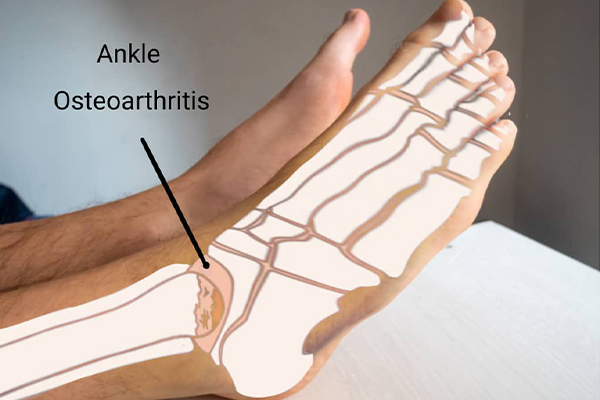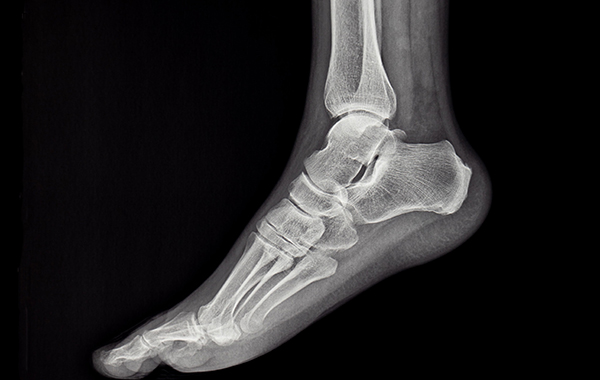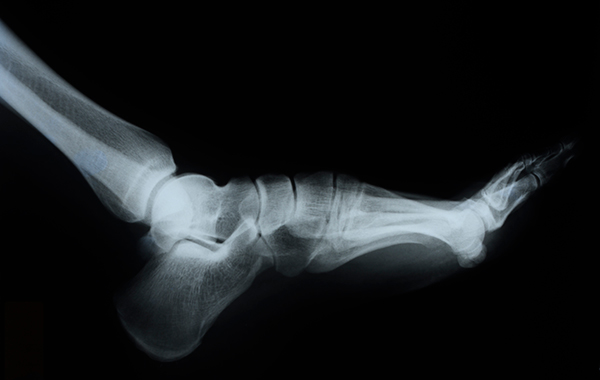Arthritis of the Foot and Ankle
UNDERSTANDING ARTHRITIS OF THE FOOT AND ANKLE
Overview
Arthritis is when one or more of your joints become swollen and inflamed, causing pain, stiffness, and joint damage. There are over a hundred types of arthritis, with the most common being osteoarthritis, especially in people over 60. Although doctors don’t often use the term “rheumatism” anymore, many people still use it to talk about arthritis that involves joint or body part wear and tear. Osteoarthritis usually affects the knees but can also impact the ankle and foot.
Your ankle joint, made up of three bones called the talus, fibula, and tibia, is key for support, stability, shock absorption, and balance when walking. This joint allows your foot to move up and down smoothly. It’s covered with a layer of cartilage that helps the bones glide over each other without friction, thanks to a lubricating layer called synovium.



Osteoarthritis:
This type gradually wears away the joint’s cartilage. Over time, as the space between the bones shrinks, the cartilage becomes rough and frayed, leading to painful bone spurs as the bones rub against each other. Osteoarthritis progresses slowly, causing increasing pain and stiffness. Although it used to be most common among older people, it’s now more widespread in younger age groups due to lifestyle changes. More people are engaging in high-impact sports or running, which can cause joints like the knee to wear out faster, allowing osteoarthritis to develop.
Rheumatoid Arthritis:
This is an autoimmune disease where the immune system attacks its own tissues. In rheumatoid arthritis, immune cells target the synovium (the lining of the joint), causing it to swell. Over time, the synovium damages the bone, cartilage, ligaments, and tendons, leading to serious joint deformity and disability. This aggressive form of arthritis requires close medical attention and medication to manage inflammation and stiffness, preventing irreversible deformity.
Post-traumatic Arthritis:
This form of arthritis develops after an injury to the foot or ankle, such as dislocations and fractures that damage the joint surface. These injuries can lead to arthritis even years later. Like osteoarthritis, it causes the cartilage between the joints to wear away. An injured joint is about seven times more likely to become arthritic than an uninjured one.
Other Forms of Arthritis:
Frequently Asked Questions
Depending on the child’s diagnosis, treatment options may include custom orthotics to correct musculoskeletal issues, as well as specialized interventions for less visible conditions.
What Is An Ankle Sprain?
An ankle sprain happens when the ligaments around the ankle are stretched too much from rolling or twisting the foot. In severe cases, this can even tear the ligament. Ankle sprains are the most common type of ankle injury in Singapore.
Why Do We Sprain Our Ankle?
Ankle sprains are often caused by a single event, like a fall, landing awkwardly after a jump, or having someone step on your foot. However, there are usually underlying factors that contribute to these sprains. Previous ankle injuries, poor footwear choices, or a lack of flexibility and strength in the ankle can all play a role. Past injuries are particularly problematic because they weaken the ankle, making it more prone to sprains. To prevent this, it’s a good idea to consult an ankle specialist or podiatrist to explore the best options for you.
What Are Some Symptoms Of An Ankle Sprain?
You can usually tell you’ve sprained your ankle if you feel a noticeable twisting or turning motion. Common signs of a sprain include:
- Pain, especially when putting weight on the foot
- Soreness or tenderness
- Swelling
- Bruising
- Difficulty moving the ankle
- A popping feeling or sound at the time of injury
If the pain doesn’t go away or gets worse when you put weight on it, you might have a fracture instead of just a sprain. It’s best to see a podiatrist or foot specialist to make sure there’s no serious damage.
Will It Go Away On Its Own?
Although ankle injuries can heal on their own, they sometimes heal incorrectly, which can lead to future problems.
A severe ankle sprain might take several months to fully recover. If not properly treated, it can lead to complications like chronic ankle instability or even ankle arthritis. That’s why it’s important to address the root cause of the injury and take preventive steps to avoid future issues.
How Can We Manage Ankle Sprains
Depending on how severe and what type of ankle sprain you have, treatments can vary from:
- Applying R.I.C.E. (Rest, Ice, Compression, Elevation)
- Using crutches or splints
- Electromagnetic stimulation to aid recovery
Both mild and severe injuries may require physical therapy for rehabilitation. Surgery is rarely needed and is usually considered only if there’s major bone damage or if other treatments haven’t worked after a long period of therapy.
Do I Need Surgery For Ankle Sprains?
Surgery is rarely needed for ankle sprains because the ligaments can often heal on their own. However, it’s important to see a foot specialist or podiatrist to prevent the injury from getting worse and to reduce the risk of future injuries.
Book your initial podiatry visit
hello@nofrillspodiatry.com
Phone
9007 1085
Open Hours
Mondays - Sundays: 9am-6pm
We're Here Whenever You Need Us
hello@nofrillspodiatry.com
Contact Us
9007 1085
Open Hours
Monday-Sundays: 10am to 7pm
Address
About
About Us
Symptoms We Help With
FAQs
Careers
Contact Us